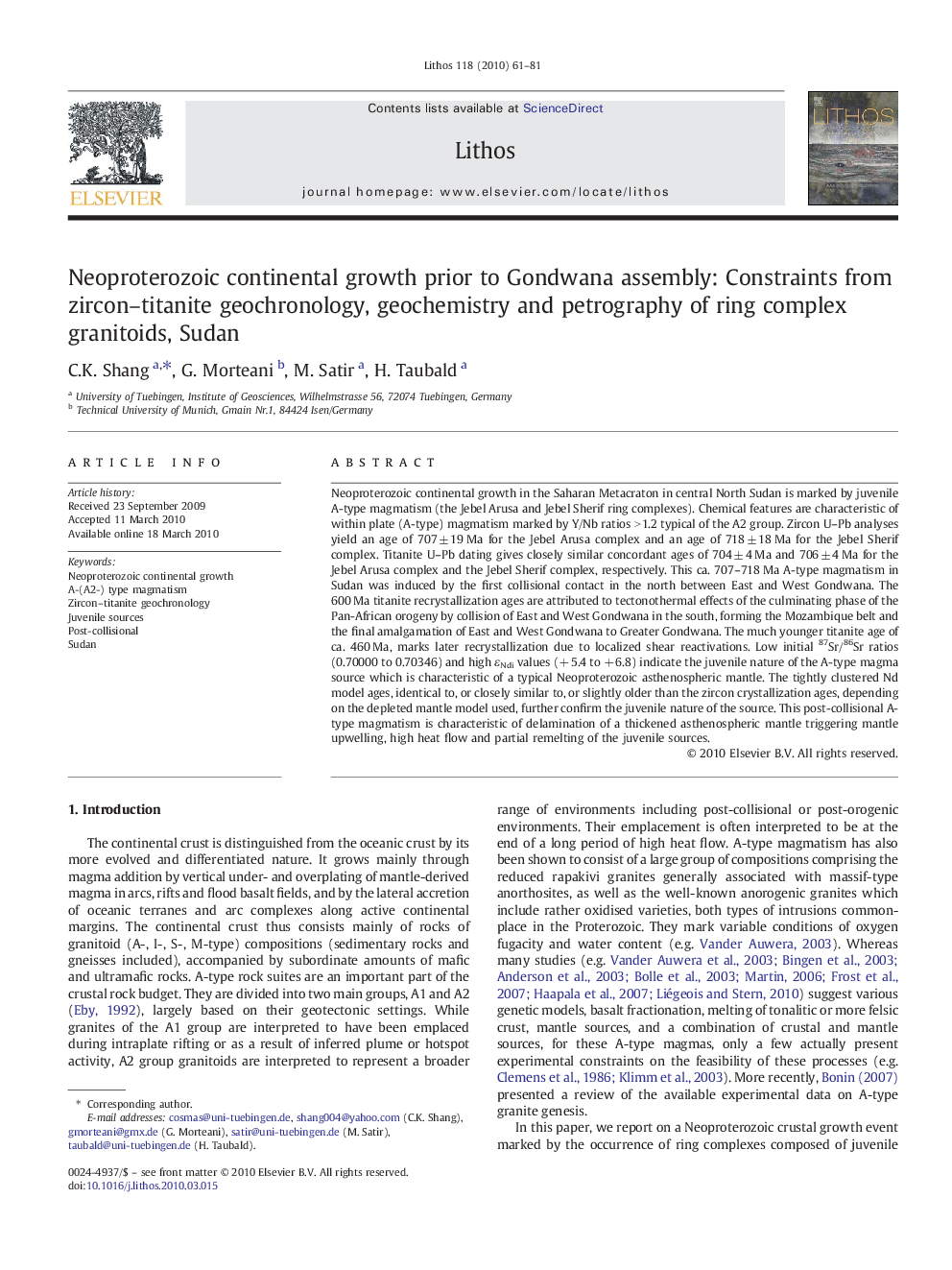| Article ID | Journal | Published Year | Pages | File Type |
|---|---|---|---|---|
| 4716829 | Lithos | 2010 | 21 Pages |
Neoproterozoic continental growth in the Saharan Metacraton in central North Sudan is marked by juvenile A-type magmatism (the Jebel Arusa and Jebel Sherif ring complexes). Chemical features are characteristic of within plate (A-type) magmatism marked by Y/Nb ratios > 1.2 typical of the A2 group. Zircon U–Pb analyses yield an age of 707 ± 19 Ma for the Jebel Arusa complex and an age of 718 ± 18 Ma for the Jebel Sherif complex. Titanite U–Pb dating gives closely similar concordant ages of 704 ± 4 Ma and 706 ± 4 Ma for the Jebel Arusa complex and the Jebel Sherif complex, respectively. This ca. 707–718 Ma A-type magmatism in Sudan was induced by the first collisional contact in the north between East and West Gondwana. The 600 Ma titanite recrystallization ages are attributed to tectonothermal effects of the culminating phase of the Pan-African orogeny by collision of East and West Gondwana in the south, forming the Mozambique belt and the final amalgamation of East and West Gondwana to Greater Gondwana. The much younger titanite age of ca. 460 Ma, marks later recrystallization due to localized shear reactivations. Low initial 87Sr/86Sr ratios (0.70000 to 0.70346) and high εNdi values (+ 5.4 to + 6.8) indicate the juvenile nature of the A-type magma source which is characteristic of a typical Neoproterozoic asthenospheric mantle. The tightly clustered Nd model ages, identical to, or closely similar to, or slightly older than the zircon crystallization ages, depending on the depleted mantle model used, further confirm the juvenile nature of the source. This post-collisional A-type magmatism is characteristic of delamination of a thickened asthenospheric mantle triggering mantle upwelling, high heat flow and partial remelting of the juvenile sources.
